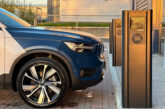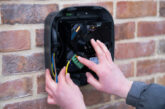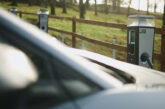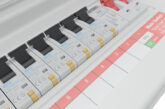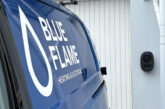
Viktors Nikolajevs, UK Key Account Manager at CTEK, utilises the latest industry data to explain why the ‘sweet spot’ for car park EV charging is central.
Destinations with car parks offering EV charging should provide a mix of charging power to appeal to the widest pool of potential visitors. But the sweet spot for boosting visitor dwell time and spend, and charging value for money, can be found in the middle ground.
Quickly growing types of public EV charge points in the UK are the medium paced units, delivering at least 8 kW and less than 50 kW, and the fastest at above 150 kW.
Visitor numbers and dwell time
Analysis by CTEK of Zapmap data showing the number and types of new UK public charge point installations reveals that fast charge points delivering at least 8 kW and less than 50 kW have grown their share of the overall market every year since at least 2021 – from 15% in 2021 to 24% at the end of 2024.
For destinations wishing to increase visitor numbers and dwell time, the (medium speed) fast chargers provide a cost and benefit advantage for the EV driver and the destination. The 8-50 kW spectrum includes faster DC charging up to 50 kW and AC charging up to 22 kW.
Public charge points delivering 8 kW to 49 kW of power cost an average of 59 pence per kWh in February 2025, according to the AA’s EV Recharge report, significantly lower than the 74p average for rapid (50-149 kW) and 78p for ultra-rapid (150 kW+), saving drivers at least £6 for an 80% charge of a car with a 50 kWh battery.
Rapid growth
For destinations hoping to attract visitors to dwell for two hours or more, a 22 kW charge point such as CTEK’s CC3 can provide such an 80% saving or more in that time, if the car’s onboard charger can handle 22 kW. Many current models have an 11 kW limit for AC charging, but even then 11 kW for two hours can contribute towards 100 miles of motoring.
Also achieving continuous annual market share rises are the ultra-rapid charge points providing 150 kW and above. Consistently falling market shares have been clocked up by both of the other segments – under 8 kW and between 50 kW and 150 kW.
The most up-to-date data, from Zapmap’s EV charging statistics (31st March 2025), shows those trends continuing. The 7 kW and below charge points remain the most numerous being installed, but its share is falling and the fast (8-50 kW) sector is catching up on the rate of installs. The typical EV driver appreciates having a choice of public charge point types (slow, fast, rapid and ultra-rapid) for the various charging needs they face. They might want a 20 minute rapid top-up on a longer journey, or a slower, cheaper charge over a period of hours.
Venues should look at their offering from the EV driver’s perspective. A retail or leisure destination will want the driver and their passengers to linger, consume and spend. That’s where fast AC charging is an attractive additional draw for the EV driver to visit, plug in and linger.
Using three-phase electricity in charging infrastructure enables faster charging. And three-phase can be used by many plug-in hybrid EVs (PHEVs) too. Modern PHEV models can charge as quickly on AC charge points as fully electric BEVs.
Furthermore, AC installations generally require less investment per plug, meaning a destination, or the Charge Point Operator (CPO) the destination works with, can install more charge points with the extra sockets improving availability.
Browse CTEK’s range of EV charging solutions here
Find more industry feature articles here

